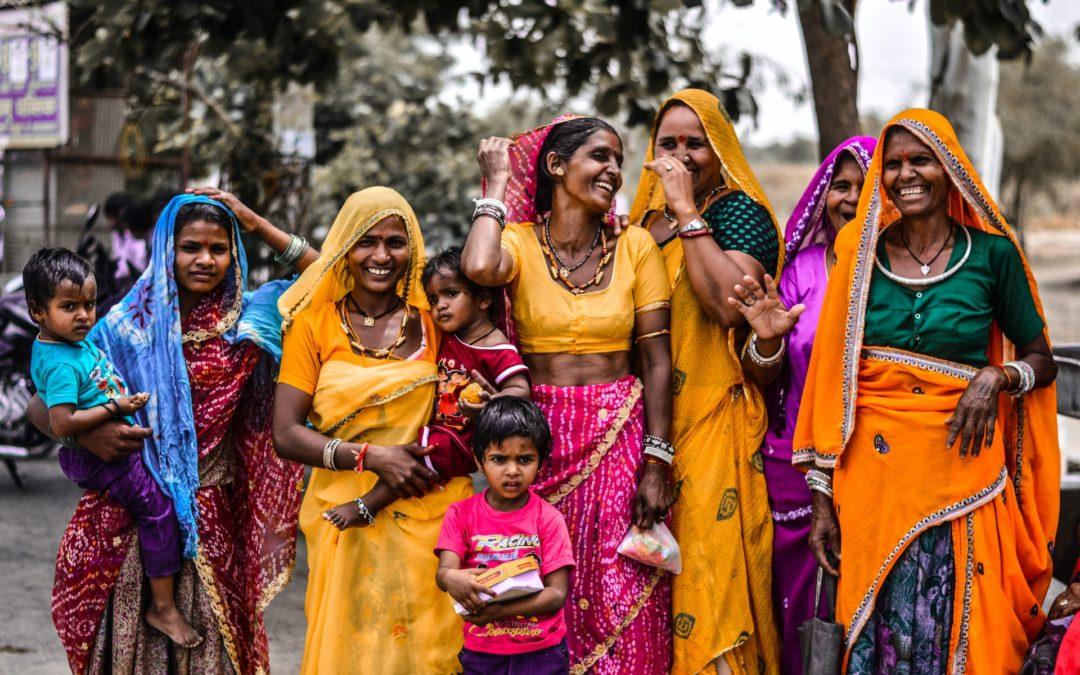In today’s world, understanding different cultural backgrounds is more important than ever. This article explores 30 examples of diverse cultures, highlighting their unique traditions, values, and ways of life. From Brazil’s vibrant festivals to Japan’s ancient customs, it offers a glimpse into how culture shapes the way people live and think.
Each example goes beyond just facts and figures – it’s about understanding what makes each culture special. Whether you’re a student, work in a multicultural environment, or are simply curious, these insights will help you appreciate the richness and diversity of cultures around the world. It’s a journey of learning, respect, and seeing the beauty in our differences.
What is Cultural Background?
Cultural background refers to the collection of social, religious, ethnic, and familial influences that shape an individual’s identity and perspectives. It encompasses the customs, traditions, languages, beliefs, and values inherited from one’s community or heritage. This rich tapestry of cultural elements influences personal experiences, worldviews, and interactions with others. Understanding one’s cultural background fosters a deeper sense of self and appreciation of diversity, contributing to more inclusive and harmonious societies.
Cultural background extends beyond personal experiences, deeply influencing societal structures and interactions. It includes the arts, folklore, historical narratives, and social norms that define a community’s identity. This background significantly impacts communication styles, decision-making processes, and relationship-building practices. By acknowledging and embracing the diversity of cultural backgrounds, we can enhance cross-cultural understanding and collaboration, promoting a global community that values and respects the rich tapestry of human experiences. This understanding is crucial in today’s interconnected world, where cultural sensitivity and awareness play key roles in fostering mutual respect and successful interactions across diverse populations.
The Best Cultural Background Examples
Chinese
Chinese culture, with a history spanning thousands of years, is deeply rooted in philosophical traditions like Confucianism and Taoism. These philosophies influence social relationships, ethics, and personal conduct. The Chinese language, with its intricate characters, is not just a mode of communication but a symbol of cultural identity. Traditional Chinese art, ranging from ink paintings to porcelain, reflects the country’s aesthetics and symbolism. Calligraphy, seen as a form of artistic expression, holds significant cultural value. Martial arts, such as Kung Fu, embody discipline and ancient combat techniques, contributing to both physical fitness and cultural heritage.
Indian
India’s cultural tapestry is woven with threads from Hinduism, Buddhism, and Jainism. Each religion has left an indelible mark on art, philosophy, and daily life. The diversity of languages spoken across the country is astounding, reflecting regional nuances. Classical dance forms like Bharatanatyam and Kathak, along with various musical styles, showcase artistic richness. Elaborate festivals, from Diwali to Holi, are not just celebrations but representations of India’s vibrant cultural mosaic.
Japanese
Influenced by Shinto and Buddhism, Japanese culture places a strong emphasis on aesthetics, discipline, and a profound connection to nature. The tea ceremony is a meticulous ritual, reflecting the importance of harmony and respect. Ikebana, the art of flower arranging, symbolizes simplicity and elegance. Traditional performing arts like Noh and Kabuki theater provide glimpses into Japan’s historical narratives. The Japanese have a deep reverence for nature, evident in practices like cherry blossom viewing (Hanami) and the celebration of seasons.
African
Africa’s cultural diversity is a treasure trove, with each ethnic group contributing unique traditions, languages, and artistic expressions. From the Maasai of East Africa, known for their vibrant beadwork and distinctive attire, to the Yoruba of West Africa, with a rich mythology and art, the continent’s cultural richness is vast. Traditional music, dance, and storytelling are integral to conveying history and values within African communities.
Arab
Arab culture, spanning the Middle East and North Africa, is united by the Arabic language and Islamic heritage. Arabic calligraphy is not just a form of writing; it’s an art that embodies spiritual expression. Islamic geometric patterns in art and architecture showcase a deep connection between art and mathematics. Arab music, with its distinctive scales and rhythms, reflects a rich tradition. The Arab world’s cultural identity is also shaped by hospitality, reflected in the warmth with which guests are received.
Native American
Indigenous peoples of the Americas have diverse cultural backgrounds, each with unique languages, spiritual beliefs, and artistic expressions. Pottery, beadwork, and intricate basket weaving are forms of art that tell stories and preserve traditions. Traditional dances, often accompanied by rhythmic drumming, are not only cultural performances but also spiritual rituals. Storytelling is a fundamental way of passing down history and wisdom through generations.
Russian
Russia’s cultural identity is complex, shaped by a history that includes Slavic traditions, Orthodox Christianity, and influences from the former Soviet Union. Russian literature, from the works of Tolstoy to Dostoevsky, explores profound philosophical themes. Ballet, with iconic performances like “Swan Lake” and “The Nutcracker,” is an art form that has gained global acclaim. Classical music, with composers like Tchaikovsky, reflects Russia’s deep cultural roots.
Mexican
Mexican culture is a vibrant fusion of indigenous Mesoamerican and Spanish colonial influences. Dia de los Muertos (Day of the Dead) is a celebration that honors ancestors with colorful altars and traditional foods. Traditional clothing, like the vibrant dresses of the Tehuana region, reflects both heritage and identity. Mariachi music, with its energetic rhythms and iconic attire, is an integral part of Mexican cultural expression. Mexican cuisine, with its diverse flavors and ingredients, is recognized globally.
French
French culture has made enduring contributions to philosophy, literature, and the arts. The French language, known for its eloquence, is a source of national pride. Haute cuisine, characterized by meticulous preparation and presentation, has influenced culinary traditions worldwide. Iconic landmarks like the Eiffel Tower and the Louvre Museum are symbols of France’s cultural heritage. French literature, from the works of Victor Hugo to Albert Camus, continues to shape global literary discourse.
Italian
Italy’s cultural background is deeply intertwined with its Roman history, Catholicism, and a passion for art and cuisine. Italian opera, with composers like Verdi and Puccini, is renowned for its emotional depth and grandeur. Renaissance art, from Michelangelo’s sculptures to Leonardo da Vinci’s paintings, is a testament to Italy’s artistic legacy. Regional culinary specialties, from pasta to pizza, showcase Italy’s rich gastronomic tradition.
Iranian (Persian)
With a history dating back to ancient Persia, Iranian culture is marked by Zoroastrianism, Islam, and a rich tradition of poetry and literature. Persian carpets, known for their intricate designs, are both functional and artistic. Intricate tilework in architecture reflects a deep appreciation for geometric patterns. Iranian poetry, from the works of Rumi to Hafez, explores themes of love, spirituality, and the human experience.
Korean
Rooted in Confucian values, Korean culture places a strong emphasis on family, respect, and harmony. Traditional music, such as the hauntingly beautiful pansori, and dance forms like the graceful fan dance are cultural expressions. The Korean language, Hangul, is unique and reflects the country’s linguistic identity. Hanbok, the traditional clothing, is characterized by vibrant colors and elegant designs.
Brazilian
Brazil’s cultural diversity is a dynamic blend of indigenous, African, and Portuguese influences. Samba music, with its lively rhythms, and capoeira, a martial art disguised as dance, are integral to Brazilian identity. The lively Carnaval celebrations, marked by colorful parades and elaborate costumes, showcase the country’s exuberance. Brazilian cuisine, with dishes like feijoada and acarajé, reflects the fusion of diverse culinary traditions.
Scandinavian
Nordic countries share a cultural background rooted in Norse mythology. Design, from furniture to fashion, reflects simplicity and functionality. Literature, from the Icelandic sagas to contemporary crime fiction, contributes to the region’s literary legacy. A strong connection to nature is evident in Scandinavian lifestyles, with outdoor activities and respect for the environment playing significant roles.
Jewish
Jewish culture is characterized by religious practices, traditions, and a shared history. The Hebrew language is not just a means of communication but a sacred connection to the scriptures. Kosher cuisine, with its dietary laws, reflects adherence to religious principles. Celebrations like Hanukkah, with the lighting of the menorah, are not only religious observances but also cultural traditions that bind Jewish communities.
Vietnamese
Influenced by Confucianism and Buddhism, Vietnamese culture places a strong emphasis on respect and harmony. The traditional ao dai clothing, characterized by its elegant design, is a symbol of Vietnamese identity. Water puppetry, a unique form of traditional performance, combines artistry and storytelling. Vietnamese cuisine is renowned for its flavorful dishes, with a delicate balance of sweet, sour, salty, and spicy flavors, reflecting the country’s rich culinary heritage.
Greek
Ancient Greek philosophy, mythology, and the history of democracy have profoundly shaped Greek culture. Souvlaki, a popular street food, is a culinary delight that reflects the simplicity and richness of Greek cuisine. Traditional dances like the sirtaki showcase the importance of community and celebration. Ancient ruins, from the Acropolis to Delphi, stand as a testament to Greece’s historical significance and cultural contributions.
Turkish
Turkey’s cultural background is a tapestry woven with influences from the Ottoman Empire, Islam, and a history of cultural exchange. Turkish carpets, known for their intricate patterns and vibrant colors, are both functional and artistic. Calligraphy, an ancient art form, is another cultural expression. Traditional music, with instruments like the oud, adds a melodic dimension to Turkish heritage.
Nigerian
Nigeria’s cultural diversity is vast, encompassing over 250 ethnic groups. Colorful festivals, such as the Durbar festival and the Eyo festival, celebrate the nation’s cultural richness. Traditional attire varies across regions, reflecting both heritage and individual identity. Diverse languages, spoken across the country, contribute to the dynamic Nigerian cultural landscape.
British
British culture is a fusion of Celtic, Anglo-Saxon, and Norman influences, creating a unique identity. Literature, from the works of Shakespeare to contemporary authors, is a cornerstone of British culture. The monarchy, with its traditions and ceremonies, is an integral part of national identity. The British sense of humor, often characterized by wit and irony, is a cultural trademark.
Polish
Rooted in Slavic traditions and Catholicism, Polish culture is celebrated through various forms of folk art, including intricate paper-cutting (wycinanki) and hand-painted pottery. Traditional music, such as the melancholic melodies of the polka, reflects the resilience and spirit of the Polish people. The Solidarity movement, a historic example of nonviolent resistance, underscores the importance of national unity and determination.
Thai
Thai culture is deeply influenced by Buddhism, evident in the ornate and meticulously designed temples throughout the country. Traditional dance, such as the graceful khon and lively traditional Thai dance, reflects both cultural and religious themes. Thai cuisine, known for its balance of sweet, sour, salty, and spicy flavors, is a culinary art form. The annual Songkran festival, with its water fights and religious ceremonies, is a vibrant celebration of the Thai New Year.
Australian Aboriginal
The Indigenous peoples of Australia have a rich cultural background rooted in Dreamtime stories, which are oral narratives explaining the origins of the land and its features. Dot paintings, an iconic form of Aboriginal art, convey spiritual and ancestral connections. Traditional ceremonies, often accompanied by didgeridoo music, connect the Aboriginal people to the land and their cultural heritage.
Swiss
Switzerland’s cultural diversity is shaped by German, French, Italian, and Roman influences. Precision in craftsmanship, exemplified by Swiss watches and precision engineering, reflects the Swiss commitment to excellence. Neutrality, a key aspect of Swiss foreign policy, is ingrained in the national identity. The scenic Alpine landscapes contribute to the Swiss appreciation for nature and outdoor activities.
Portuguese
Portugal’s cultural background is influenced by maritime history, Catholicism, and the legacy of former colonies. Fado music, with its soulful melodies and expressive lyrics, captures the essence of Portuguese Saudade (longing). Azulejo tiles, seen in traditional Portuguese architecture, are intricate and colorful. Festive celebrations, like the Carnival of Lisbon, showcase the Portuguese love for music, dance, and cultural expression.
South African
With a history marked by apartheid, South African culture is diverse, resilient, and rich. Traditional dances, such as the gumboot dance and the energetic rhythm of marimba music, reflect the vibrant cultural expressions of different ethnic groups. Diverse languages, including isiZulu, isiXhosa, and Afrikaans, contribute to the multicultural fabric of South Africa. Vibrant art, from contemporary sculptures to traditional beadwork, reflects the resilience and diversity of the nation.
Cuban
Cuban culture is a lively fusion of Spanish, African, and indigenous influences. Salsa music, with its infectious rhythms and energetic dances, is a hallmark of Cuban identity. Afro-Cuban religions, such as Santeria, reflect a blend of African spirituality and Catholicism. The colorful streets of Havana, with their colonial architecture and vintage cars, contribute to the vibrant and dynamic Cuban cultural scene.
Inuit
The Inuit culture of the Arctic regions is characterized by its survival in harsh environments. Inuit art, including sculptures, prints, and textile art, often depicts the wildlife and landscapes of the Arctic. Storytelling is a vital tradition, passing down knowledge and cultural values. The unique connection to the Arctic landscape, with its ice and snow, shapes Inuit cultural practices and beliefs.
Iranian (Azeri)
The Azeri ethnic group in Iran has a distinct cultural background influenced by broader Iranian culture and regional traditions. Traditional Azeri music, often featuring instruments like the tar and kamancha, reflects the unique melodic patterns and rhythms of the region. Azeri dance, with its intricate footwork and vibrant costumes, is a lively cultural expression that celebrates community and festivity.
Indonesian
Indonesia’s cultural diversity is vast, with influences from Hindu-Buddhist kingdoms, Islam, and a rich tradition of batik art and dance. Traditional ceremonies, such as the elaborate Javanese wedding ceremony, are significant cultural events. Wayang kulit (shadow puppetry), with its intricately crafted leather puppets, is both an art form and a storytelling tradition. The diverse culinary delights, from rendang to nasi goreng, showcase the rich flavors of Indonesian cuisine.
Importance of Understading Cultural Background
Understanding cultural background is a cornerstone in the mosaic of global interaction and harmony. In a world increasingly interconnected, yet startlingly diverse, the ability to appreciate and interpret cultural nuances is not just a social asset, but a necessary skill for navigating the complex tapestry of human experiences.
At its core, culture encapsulates the shared values, traditions, norms, customs, arts, history, folklore, and institutions of a group of people. It’s a collective identity that shapes perspectives, influences behavior, and informs decision-making processes. In acknowledging and understanding these cultural backgrounds, we open doors to more profound and empathetic connections.
One of the most tangible benefits of understanding cultural background is the enhancement of communication. Misunderstandings and conflicts often arise not from malice, but from cultural misinterpretations. When we understand where someone is coming from culturally, we are better equipped to interpret their words and actions in the context they were intended. This understanding fosters a climate of respect and tolerance.
Moreover, in a globalized economy, cultural competence is invaluable. Businesses that appreciate and adapt to different cultural norms and practices are more likely to succeed in international markets. It’s not just about language barriers; it’s about understanding business etiquettes, negotiation styles, and decision-making processes that vary from culture to culture.
Furthermore, understanding cultural backgrounds enriches personal growth. It encourages us to question our biases and assumptions, leading to a more nuanced worldview. This enrichment extends to education, where culturally aware teaching can engage a diverse student body more effectively, making education a more inclusive and equitable experience.
In a broader sense, cultural understanding plays a crucial role in addressing global challenges. Issues like immigration, climate change, and international conflict require a nuanced understanding of the cultural factors at play. Solutions that are sensitive to these factors are more likely to be effective and sustainable.
Lastly, in a world where cultural lines are often drawn sharply, leading to division and conflict, understanding cultural backgrounds can be a bridge. It promotes empathy, challenges stereotypes, and fosters an environment where diversity is celebrated, not feared.
In conclusion, understanding cultural backgrounds is not just an academic exercise; it’s a vital component of living in a diverse world. It equips us with the tools to communicate effectively, conduct business proficiently, grow personally, educate inclusively, solve global challenges, and most importantly, coexist peacefully. As the world continues to shrink and cultures collide, this understanding isn’t just important; it’s imperative.
How Does Cultural Background Impact Communication?
Cultural background profoundly influences the dynamics of communication, affecting both verbal and non-verbal elements. Differences in language, gestures, and social norms across various cultures can often result in misunderstandings. For example, while some cultures value directness in communication, others might lean towards more indirect or subtle forms of expression. Therefore, cultural awareness is crucial for effective cross-cultural communication, as it equips individuals with the ability to navigate these diverse differences and cultivate a deeper mutual understanding.
What Are the Benefits of Considering Cultural Background?
Considering cultural background brings forth a multitude of benefits. It actively promotes cultural diversity, fostering an environment where various perspectives thrive. This diversity, in turn, enriches creativity by providing a melting pot of ideas and inspirations. The consideration of cultural backgrounds contributes to the cultivation of tolerance and the enhancement of global collaboration. Beyond these collective advantages, it plays a pivotal role in individual development, promoting personal growth, cultural awareness, and a broader worldview. Cultural understanding emerges as a linchpin for innovation, education, and adapting to the complexities of diverse environments.
Are There Challenges Associated with Cultural Background?
Indeed, challenges accompany the consideration of cultural background. Cultural conflicts may arise due to differing values, norms, and perspectives. Stereotyping based on cultural backgrounds can perpetuate biases and lead to unfair generalizations. Language barriers pose a significant hurdle, hindering effective communication. Additionally, there is potential resistance to change, as individuals may be reluctant to embrace aspects of different cultural backgrounds. Issues such as cultural appropriation, discrimination, and cultural hegemony also warrant attention. For those navigating multiple cultural backgrounds, identity challenges may surface, requiring a delicate balance of cultural integration.
How Does Cultural Background Impact Education?
Cultural background exerts a profound influence on education, shaping teaching methods, curriculum content, and the overall learning environment. The incorporation of diverse cultural perspectives enhances inclusivity in educational settings. It fosters critical thinking by exposing students to a variety of viewpoints and experiences. Moreover, recognition of cultural diversity prepares individuals for global citizenship, equipping them to navigate an interconnected world with empathy and a nuanced understanding of different cultures.
What Role Does Cultural Background Play In The Workplace?
In the workplace, cultural background significantly influences communication dynamics, teamwork, and leadership styles. The presence of cultural diversity can be a catalyst for enhanced creativity and problem-solving. However, challenges may arise in terms of understanding and integrating different work styles. Successful navigation of cultural backgrounds in the workplace requires fostering an inclusive environment, promoting effective communication strategies, and encouraging a culture of respect and appreciation for diverse perspectives.
Can Cultural Background Change Over Time?
While certain aspects of cultural background are deeply rooted, individuals and communities can undergo cultural changes over time. Factors such as globalization, migration, and exposure to new ideas contribute to evolving cultural identities. The interplay of these external influences and internal shifts within a community or individual can lead to a gradual transformation of cultural practices, values, and traditions.
Read Also: 20 Best Examples of Global Community
The Most Popular on BitGlint

Zesty: 30 Examples & Definition and Meaning
Zestiness brings energy, excitement, and bold flavor to life. Whether in food, personality traits, or activities,...

20 Best Examples of Hope & Definition
In today's fast-paced world, hope serves as a beacon, guiding us through challenging times and towards brighter days....

30 Disappointment Examples & Definition
Disappointment is an emotional response we all experience when our hopes, expectations, or desires aren't met. It's...

20 Examples of Secondary Consumers in the Food Chain
Secondary consumers are animals that eat other animals—usually herbivores that feed on plants. They’re an important...

40 Social Dilemma Examples in the World & Real Life
Social dilemmas are everywhere. They shape the choices we make at work, in our communities, and even on a global...

20 Chronology Examples & Meaning
Chronology is something we use more than we realize. It shows up in conversations, in how we remember the past, and in...

30 Respect Examples & Definition
Respect is one of the foundation stones of healthy relationships and functioning societies. It involves showing...
Get Inspired with BitGlint

